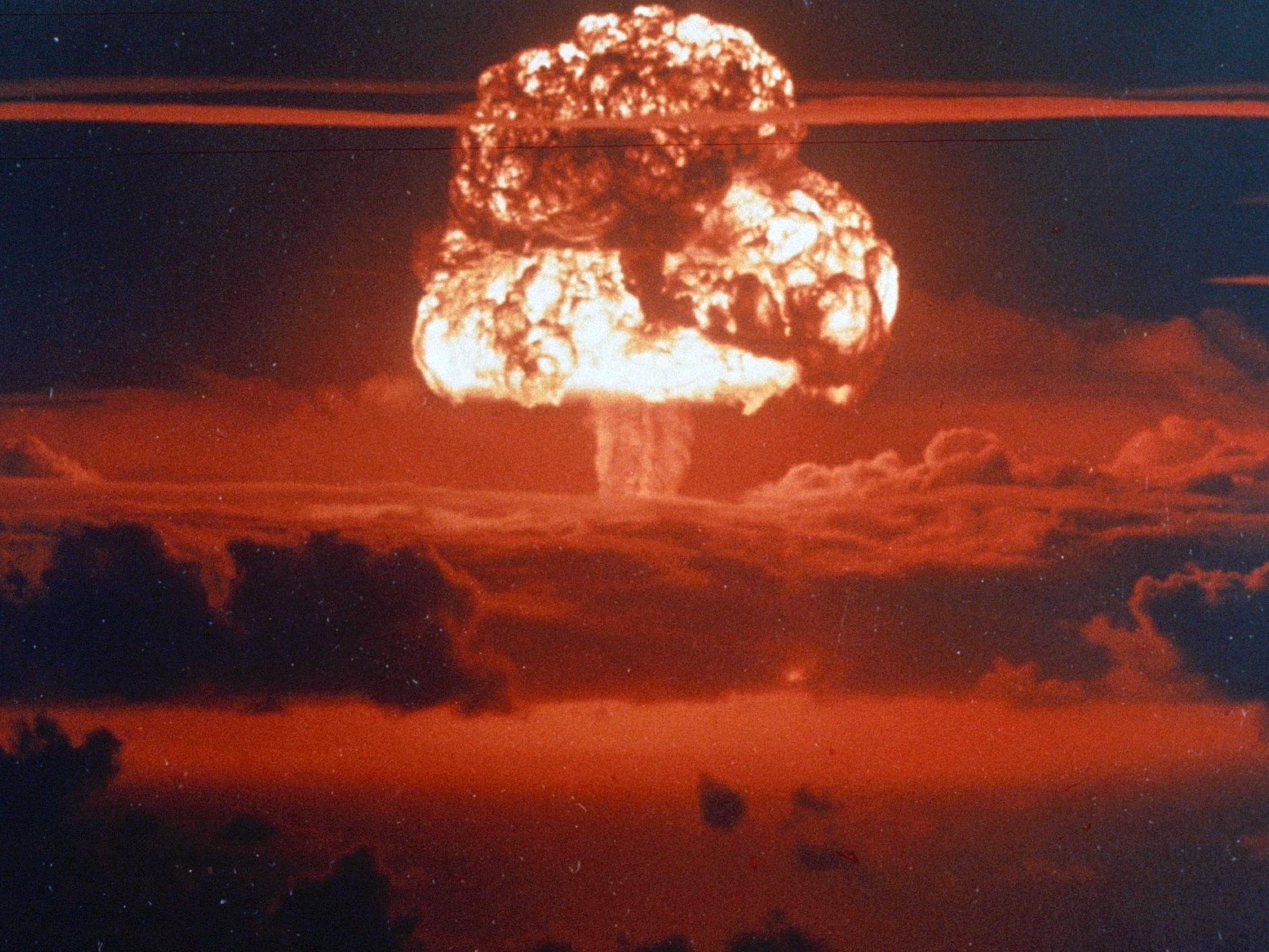The worst effects of our nuclear programme are the ones that nobody talks about
Between 1946-1996, more than 2,000 nuclear weapons tests were conducted by the US, UK, Soviet Union, France and China. Most of these took place in locations selected on the basis of colonial history, and in lands belonging to indigenous peoples

A quarter of a century after the end of the Cold War, interest in nuclear weapons has revived, not reduced. But still a taboo surrounds our nuclear legacy. For all the debate over the tensions between the United States and North Korea, a taboo still surrounds the lingering impacts of nuclear weapons testing and fears for their future use in conflict.
Our latest research looked not only at the implications of a potential future nuclear conflict, but also the humanitarian consequences of nuclear weapons testing for more than seven decades.
Between 1946-1996, more than 2,000 nuclear weapons tests were conducted by the US, UK, Soviet Union, France and China. Most of these took place in locations selected on the basis of colonial history, and in lands belonging to indigenous peoples. And the impacts were severe.
As well as devastating costs to their health and environment, many affected communities still live with the social, cultural and economic consequences of these tests. Subjected to forced displacement, they lost their land and connection to that land forever. Many were prevented from pursuing their traditional livelihoods. Not everyone was compensated, and those affected reported a lack of official accountability.
Nuclear tests have adversely impacted mental health, by fostering climate of fear over radiological exposure in test locations, and through the creation culture of social stigma and discrimination.

One of the less tangible legacies of nuclear tests has been a sense of humiliation and alienation from society. This was seen following the attacks on Hiroshima and Nagasaki, when hibakusha women - survivors of the atomic bomb in Hiroshima and Nagasaki - faced marriage discrimination, but it echoed at testing sites. As a UNIDIR study noted, women from the Marshall islands suffered “humiliating” examinations by US military medical and scientific personnel as a result of the American nuclear weapons testing programme until 1958.
Today, the potential use of nuclear weapons, deliberate or accidental, represents a great risk to humanity. Two decades on from its inception, the Comprehensive Test Ban Treaty (CTBT) - an agreement to ban all types of nuclear detonations, including atmospheric, underground, space and underwater tests - has still not entered into force. The international nuclear order is in peril: the US and Russia have increased investment in nuclear modernisation; North Korea has conducted five tests in the past decade and has the will to continue, regardless of sanctions or threats of action.
Nuclear testing is part of weapons research and development: several steps ahead of a test is the decision to be ready, in principle, to use a nuclear weapon. There is an important connection between the widely-supported comprehensive ban on nuclear testing, and attempts to ban nuclear weapons altogether. A ban on testing has been pursued largely due to unacceptable effects on human life and the environment; precisely the same concerns drive current efforts to prohibit nuclear weapons.
Last week, the British and Australian governments announced healthcare aid for the indigenous communities who were exposed to radiation as a result of British nuclear tests 50 years ago. In a personal interview with us last year, Sue-Coleman Haseldine, a first-generation nuclear test survivor in Australia, told us the only possible compensation to her community would be “a world free of nuclear weapons”.
It’s time to start talking about the long-lasting effects of nuclear weapons. After all, unless we do, the nuclear taboo will only exist until a devastating detonation occurs somewhere in the world.
Dr Beyza Unal is a research fellow in nuclear weapons policy at Chatham House
Join our commenting forum
Join thought-provoking conversations, follow other Independent readers and see their replies
Comments
Bookmark popover
Removed from bookmarks